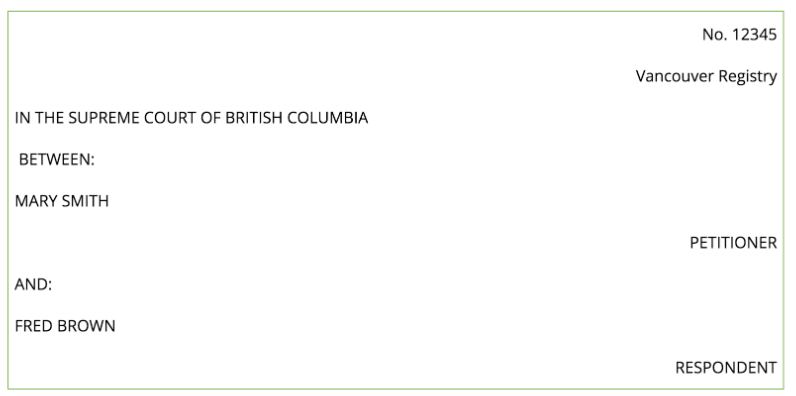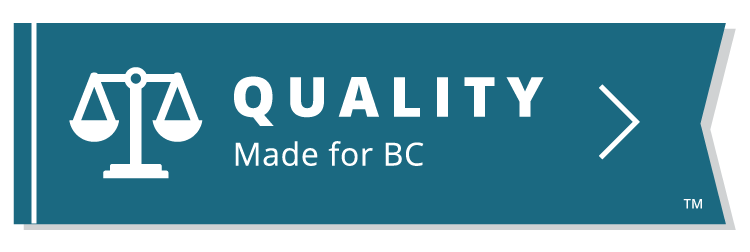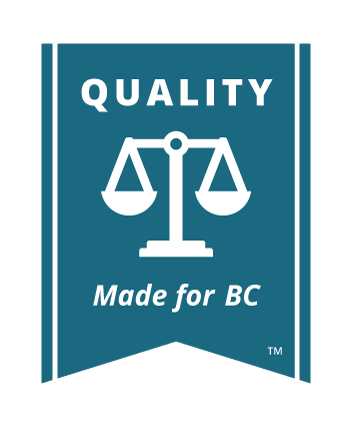Preparing Your Documents
In order to start a petition proceeding you must prepare:
- A Petition to the Court (Form 66). The petition to the court is the document that sets out what happened, what you would like the Court to do about it, and why
- One or more supporting affidavits. The supporting affidavit is where you provide the evidence that will prove the facts in your petition. For more information on preparing an affidavit, see Affidavits

Find the Form
Form 66 Petition to the Court
Drafting the Petition
Prepare your petition (Form 66) only when you have all the information that you need to start the proceeding. The petition and affidavit together must include all the information that you want the court to consider.
The purpose of the petition is to set out the basis of your claim, including:
- The orders sought against each petition respondent
- A concise statement of the material facts giving rise to the claim
- A concise summary of the legal basis for the relief sought and
- The material you are relying on
Get Help
The Petition to the Court might be the most important document in the case. It explains what happened, what you would like the Court to do about it, and why.
It may be worth getting a lawyer to help with the Petition to the Court, even if you do not plan on using a lawyer for the rest of the claim. For information about how to find a lawyer, see Get Help.
You should look at Petitions that have been prepared by lawyers in cases like yours before drafting. This will help you understand what you may want to include. After it is filed, unless the Court orders it secret, a Petition to the Court is a public document. You can get copies of Petitions to the Court through the registry, and the Courthouse library staff may be able to help you locate helpful examples.
Style of Proceeding
Begin by preparing a style of proceeding (also often referred to as a “style of cause”).
The style of proceeding is used on documents prepared for the litigation. It provides the key information that will identify your claim: the parties, the court, and the file number.
You will use the style of proceeding on every one of your documents, whether they are filed in the court registry or not. Create it properly once, and you can copy and paste it into new documents as you prepare them.
Here is an example of a completed style of proceeding on a petition:

You will not yet have a file number. Rather, the file number (in the top right hand corner) will be stamped by the court registry when you file your claim.
However, on all future documents include the file number. It is important for the registry to identify the case.
Judicial Review
For a judicial review, the decision maker i.e the tribunal who made the decision you want reviewed, the Attorney General (following Rule 4-3(6)) and any other person involved in the matter must be given notice and served with a copy of the filed petition.

Learn More
Visit JudicialReviewBC.ca and the BC Judicial Review Self-Help Guide for more information and a sample Petition for Judicial Review, CLAS
If you wish to raise an argument about why a Tribunal’s decision was wrong, you need to state it in your petition. Be careful to include the relevant facts. Further, you will need to state a legal reason that the Court could interfere. This may include:
- The decision was patently unreasonable, unreasonable, and/or incorrect;
- The decision was made in an unfair way;
- The decision maker appeared biased (do not make allegations of bias without good reason, doing so will only hurt how the Court looks at you).
Order Sought – What Do You Want the Court to Do?
The Petition to the Court has 4 parts: Order Sought, Factual Basis, Legal Basis, and Material Relied On.
Set out in clear terms exactly what you would like the Court to order. Think carefully about what you need. Do your best to make sure that the Court has the power to make the order you are asking for. Reviewing other filed petitions in similar cases may give you a good idea as to what to ask for.
You may want to include a claim asking for “costs”. This means that if you are successful, the petition respondents might be ordered to pay some money to cover some of your expenses in bringing the petition. For more information on costs, see Costs.
Factual Basis
This is your chance to tell the story. Your job is to explain what happened.
When drafting your factual basis section:
- Write in a chronological order
- Use a new paragraph for every sentence and
- Keep your sentences short
You do not need to explain how you are going to prove what happened. The rule is you need to plead facts, not evidence. You will provide your evidence in your affidavit.
For example, imagine a situation where you brought a petition challenging how an estate was administered. Say you did not receive a guitar that was promised to you. The fact that the guitar was never given to you is a fact you would state in your petition. That three people saw the executor playing the guitar at the beach is evidence that he kept the instrument, but not a fact that would have to be proven to establish your case. Whether or not he played the guitar does not change what is important – that he did not give it to you.
The facts that you need to prove in order to establish your claim are called “material facts”. Understanding what the “material facts” are for your claim can be tricky.
To provide an example between a fact and a material fact, in the guitar matter again, the fact that you love to play guitar is not a material fact needed to prove that you should get the guitar. If you had never played guitar once that would not change the essential facts that it was left to you in the will and the executor has held on to it. Therefore, why the instrument was left to you is not a material fact.
In thinking about what material facts to include, think about what you want the Court to order and the legal basis that will allow them to make that order.
You can find help with deciding what needs to go into your claim at the local courthouse library. One helpful resource available at the Courthouse is a book called “McLachlin & Taylor BC Practice”. This book has examples of what you need to include in your Petition to the Court to prove different claims in court, and has the exact language you could include.
You will need to prove every fact set out in Part 4 of your petition response through affidavit evidence. Make sure that you prepare affidavits that proves every fact set out in Part 4 of your petition response. For more information on preparing your affidavit, see Affidavits.
Legal Basis
Determining the law that applies to your case can be hard. Learning to decide what law applies where is a large part of what is taught in law school. There are many helpful resources at the Courthouse libraries that may assist. However, getting up to speed on what law applies will take time and effort.
For more information on how to research the law that applies to your case, see Legal Research.
Material Relied On
Finally, list the affidavits that you plan on relying on to support your petition. If possible, have all affidavits ready when you file your petition. Describe the affidavit by calling it, for example, the “Affidavit of John Smith, affirmed January 3, 2020”.

Key Terms
An affidavit is a form of evidence. It is a written statement of facts confirmed to be true.
If you do not have one or more of the affidavits you plan to file prepared yet at the time you file the petition, you may write, for example, “Affidavit of John Smith, to be affirmed”.
If you later need to rely on additional affidavits not listed in your petition, it may result in the hearing of your petition being delayed. It is important therefore to get all your affidavit evidence prepared as quickly as possible.
For more information on affidavits, see Affidavits.







 JusticeEducation.ca
JusticeEducation.ca JusticeEd
JusticeEd /JusticeEducation
/JusticeEducation